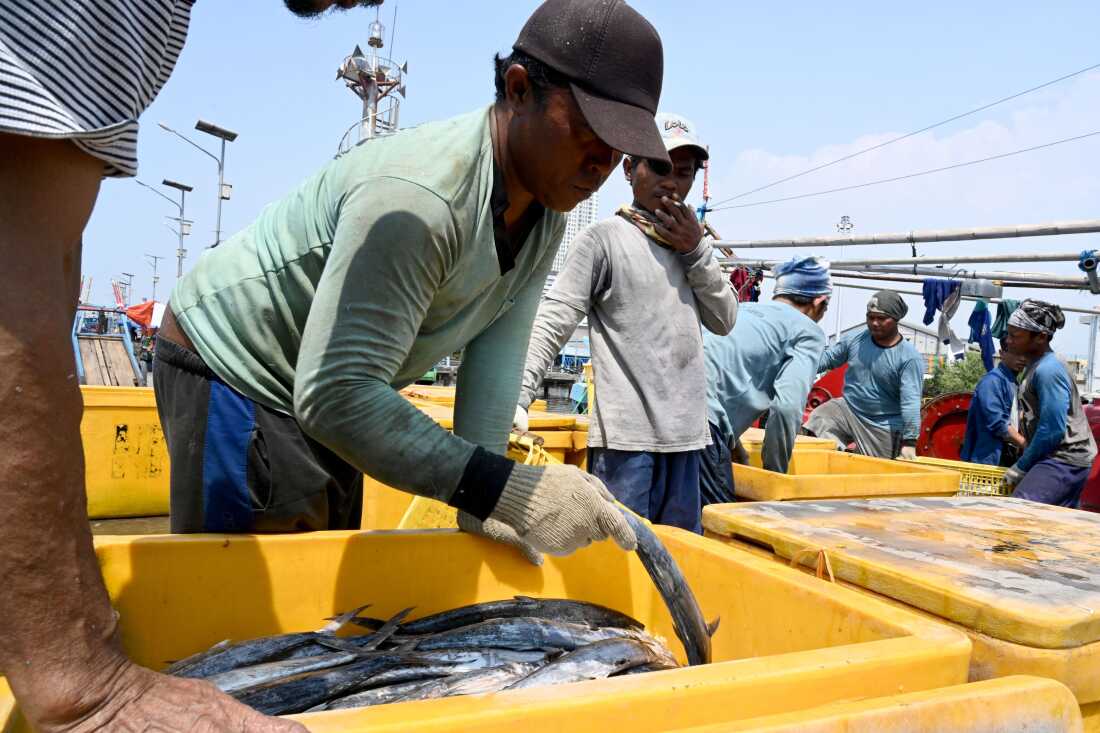
Indonesian fishermen unload their catch at the port in Jakarta on May 5, 2019. Goh Chai Hin/AFP via Getty Images hide caption
toggle caption Goh Chai Hin/AFP via Getty ImagesA trip to the grocery or liquor store is about to become even more expensive, economists say, following the latest round of import tariffs announced by President Trump on Wednesday. Those tariffs— taxes paid by businesses on goods from abroad —come on the heels of a previous round aimed specifically at Canada, Mexico and China.

Asia Trade war escalates as China hits back with 34% tariffs on all U.S. goods
Prices for items such as seafood, coffee, wine, nuts and cheese are all expected to rise. And if you're tempted to grab a candy bar while you're in the checkout line, you'll probably have to pay more for that as well.
Food industry analyst Phil Lempert, also the editor of supermarketguru.com, estimates that with the latest tariffs added onto the import taxes already imposed on grocery items from China, Canada and Mexico, "probably almost half of the products in a supermarket — about 40,000 products — will be affected by these tariffs, whether it's the entire product or just an ingredient."
Sponsor Message
Joseph Balagtas, a professor of agricultural economics at Purdue University, says food prices will also be affected by other factors related to tariffs, such as higher costs for fertilizer from Canada and a weaker U.S. dollar.
World Trump unveils 10% tariff on all imports and 'reciprocal' tariffs dozens of economies
"A main takeaway here is that the country-specific, food-specific tariffs will not tell the whole story," he says. "This is such a big change in policy that there will be broader implications."
It's impossible yet to know how much the tariffs will affect prices, but with the 10% tariff for many countries and higher "reciprocal tariffs" on other nations, the tariff rates by country could provide some clues.
Here are 10 grocery items you might want to keep an eye on and their country of origin (with tariff rates in parentheses).
SeafoodTop sources: Canada (25%), Chile (10%), India (26%), Indonesia (32%) and Vietnam (46%) are the largest suppliers, according to the U.S. Department of Agriculture.

Planet Money How much will tariffs raise prices? Trump's economists just revealed their answer
This category is likely to take a big hit because the U.S. the vast majority of its seafood — up to 85% according to the National Oceanic and Atmospheric Administration — and several countries that supply fish and shellfish to the U.S. have been among the hardest hit by the tariffs.
Top sources: Brazil (10%) and Colombia (10%), according to .







